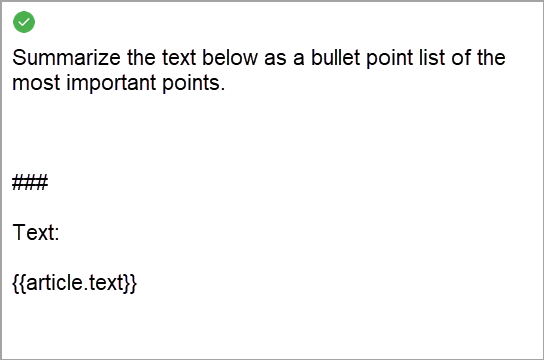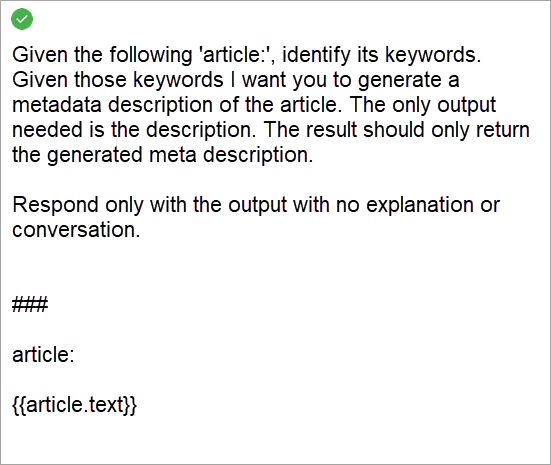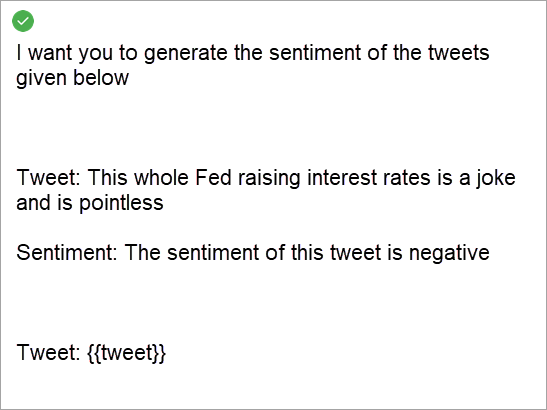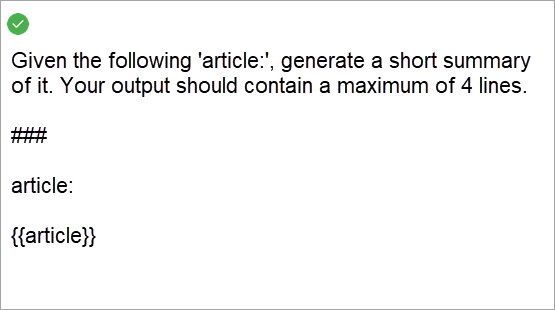Prompt Authoring Best Practices
Crafting effective prompts is the first step towards getting accurate and efficient results from AssistGPT. Following the best practices to create prompts ensures the quality and consistency of generated output. These practices help give instructions to the AssistGPT model in a way that optimizes output generation.
### Separator for Instructions and Context
While providing instructions to AssistGPT, it is essential to give detailed instructions and relevant context so that it can process the information and deliver an accurate response. It is also essential to differentiate between the instructions and the context by using three hash ### icons. This acts as a separator for the AssistGPT model to understand that the instructions and the context are separate commands for it to process. It is important to use these separators in your instructions to delineate the instructions and the context.

Number of Instructions
The number and complexity of instructions determine the accuracy with which they are processed. It is easier for the AssistGPT to follow 3-4 simple instructions or 1-2 complex instructions in a single prompt. It is best practice to keep the instruction complexity to this level for the AssistGPT to create accurate output.
If the article content is passed in the prompt instructions, there is also an additional practice to follow. If you keep simple instructions for the prompt, it processes the context of a long article well. Similarly, the AssistGPT follows a short article better with a prompt that has complex instructions.
Defining a simple or complex task is an iterative process. Typically, users can use intuition to define a simple or complex task. This judgment can also be formed based on the response from AssistGPT.

Using Examples
It is important to give relevant example references to the AssistGPT so that it generates contextually relevant responses. These references can be given in the form of examples. Using examples narrows down the focus and churns out more relevant solutions.

Narrowing the Expected Output
Defining the expectations from the generated content limits the scope of the output generated for a prompt. It sets a clearly defined outcome expectation for the model to follow and leaves out random suggestions from the output.

Using Personas
Personas act as another reference point for the AssistGPT to use relevant language and complete the task from the reference point of the required role.

Related Topics